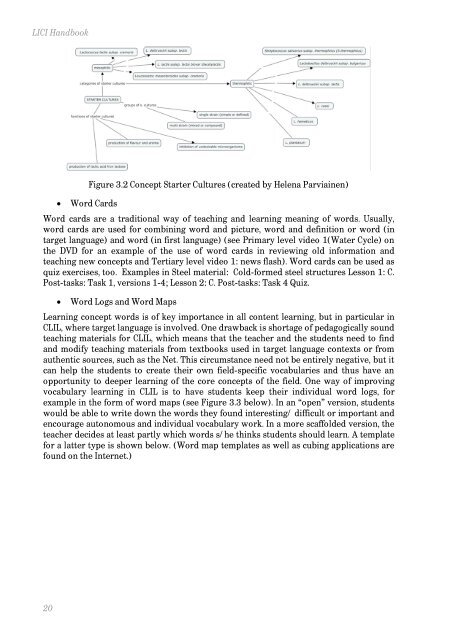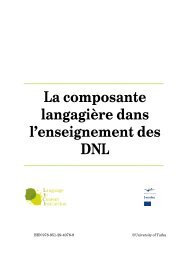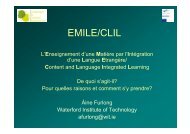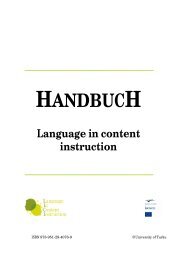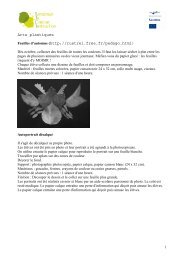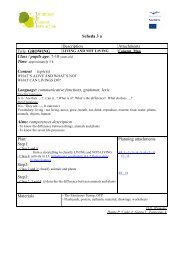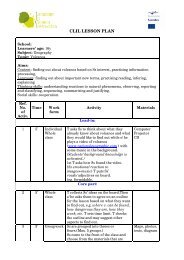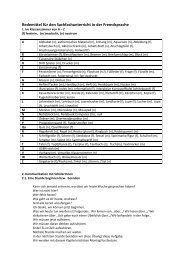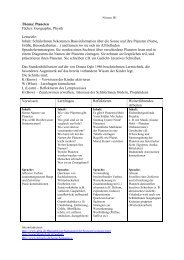Language in content instruction - LICI Project
Language in content instruction - LICI Project
Language in content instruction - LICI Project
Create successful ePaper yourself
Turn your PDF publications into a flip-book with our unique Google optimized e-Paper software.
<strong>LICI</strong> Handbook<br />
20<br />
Word Cards<br />
Figure 3.2 Concept Starter Cultures (created by Helena Parvia<strong>in</strong>en)<br />
Word cards are a traditional way of teach<strong>in</strong>g and learn<strong>in</strong>g mean<strong>in</strong>g of words. Usually,<br />
word cards are used for comb<strong>in</strong><strong>in</strong>g word and picture, word and def<strong>in</strong>ition or word (<strong>in</strong><br />
target language) and word (<strong>in</strong> first language) (see Primary level video 1(Water Cycle) on<br />
the DVD for an example of the use of word cards <strong>in</strong> review<strong>in</strong>g old <strong>in</strong>formation and<br />
teach<strong>in</strong>g new concepts and Tertiary level video 1: news flash). Word cards can be used as<br />
quiz exercises, too. Examples <strong>in</strong> Steel material: Cold-formed steel structures Lesson 1: C.<br />
Post-tasks: Task 1, versions 1-4; Lesson 2: C. Post-tasks: Task 4 Quiz.<br />
Word Logs and Word Maps<br />
Learn<strong>in</strong>g concept words is of key importance <strong>in</strong> all <strong>content</strong> learn<strong>in</strong>g, but <strong>in</strong> particular <strong>in</strong><br />
CLIL, where target language is <strong>in</strong>volved. One drawback is shortage of pedagogically sound<br />
teach<strong>in</strong>g materials for CLIL, which means that the teacher and the students need to f<strong>in</strong>d<br />
and modify teach<strong>in</strong>g materials from textbooks used <strong>in</strong> target language contexts or from<br />
authentic sources, such as the Net. This circumstance need not be entirely negative, but it<br />
can help the students to create their own field-specific vocabularies and thus have an<br />
opportunity to deeper learn<strong>in</strong>g of the core concepts of the field. One way of improv<strong>in</strong>g<br />
vocabulary learn<strong>in</strong>g <strong>in</strong> CLIL is to have students keep their <strong>in</strong>dividual word logs, for<br />
example <strong>in</strong> the form of word maps (see Figure 3.3 below). In an “open” version, students<br />
would be able to write down the words they found <strong>in</strong>terest<strong>in</strong>g/ difficult or important and<br />
encourage autonomous and <strong>in</strong>dividual vocabulary work. In a more scaffolded version, the<br />
teacher decides at least partly which words s/he th<strong>in</strong>ks students should learn. A template<br />
for a latter type is shown below. (Word map templates as well as cub<strong>in</strong>g applications are<br />
found on the Internet.)


